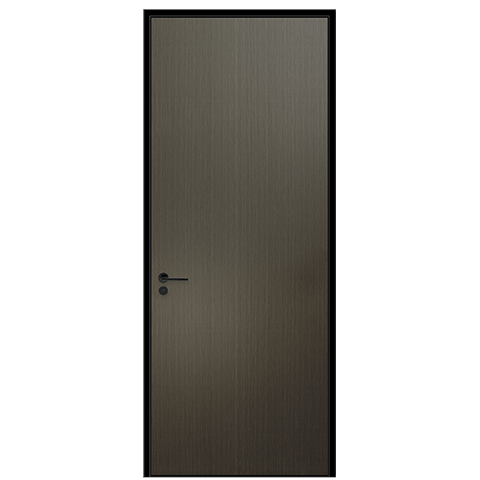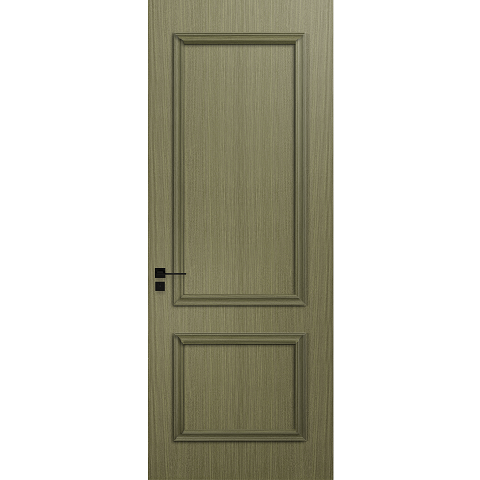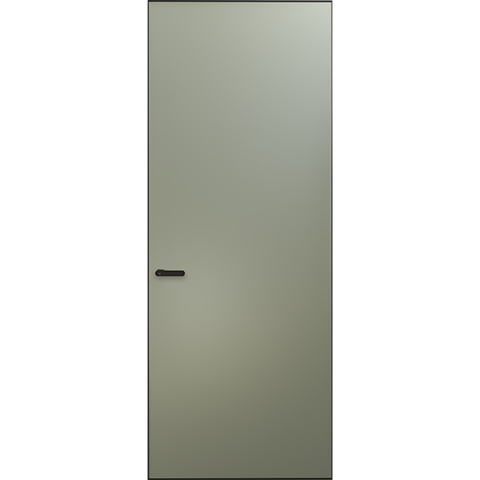What is a casement window? Which is better, casement windows or sliding windows
A window whose sash opens and closes along a certain horizontal direction is called a casement window. Casement windows are generally divided into two types: push-pull and top-hung. The structure of casement windows is simple, and it is very easy to open and close. Compared with other types of windows, casement windows have a large opening area and good ventilation and lighting performance. There are also some disadvantages in opening windows. When choosing, you can decide whether to buy and install casement windows according to your own needs. So which is better, casement windows or sliding windows? What screens are used for casement windows? How to install the casement window? Below, the editor of Baydee.com will introduce the encyclopedia of knowledge about casement windows.
Casement window introduction
What is a casement window
Casement windows are a style of windows in folk houses. The opening and closing of the sash moves along a certain horizontal direction, so it is called "casement window".
Applicable places for casement windows
Because of its excellent air tightness and wind resistance, casement windows are popular in practical use, and are mostly used in large spaces or scenes with high environmental requirements, such as living rooms, balconies, and study rooms.
Whether the casement window opens inward or outward
Casement windows are divided into two types: inward opening and outward opening. Outward opening windows refer to the casement windows in which part or the whole of the sash protrudes to the outside after the sash is opened, or it can be simply understood that when people open the window indoors, the sash "Push out", such a window is an "outward opening window". After the window is opened, the sash enters the indoor casement window, which is an "inward opening window".
Advantages and disadvantages of casement windows
Advantages of casement windows
1. Simple structure
First of all, the structure is simple, the opening is the whole door, and the sealing performance is particularly good when it is closed. Unlike the sliding window, there is no pulley, but the sealing performance is much better. Because sliding windows have pulleys, even if sealing strips are installed, they will wear out after a long time, so casement windows have an advantage in this regard.
2. Good ventilation
Secondly, the ventilation of the casement window is also very good. Because of the good sealing performance, the casement window has good functions such as sound insulation, heat preservation, and impermeability. When the casement window is operated, it is also divided into two ways: inward opening and outward opening. The advantage of inward opening is that it is convenient for scrubbing, and the feature of outward opening is that it does not occupy indoor space.
3. Good security
Finally, the linkage hardware and handles arranged around the sash of the casement window can be operated indoors. When the window is closed, the surroundings can be fixed on the window frame, which has better security and anti-theft performance.
Disadvantages of casement windows
1. Inner opening takes up space
If you choose an inward-opening casement window, it will take up indoor space, and it is not suitable for small apartments, so it is not recommended for small apartments. The overall window width of the casement window is small, and the field of view is not wide.
2. The outward opening type is easy to be damaged
If you choose the outward-opening type, it is easy to be damaged when there is a strong wind, such as if it is not fixed, the glass is damaged, or the window sash is dropped directly, it is easy to cause accidents, and it is easy to rust and break after a long time.
3. It is inconvenient to use screens, curtains, etc.
For example, you want to open the windows to ventilate at night in summer, but the curtains are not closed tightly. In addition, the safety is not very good. Children may hit their heads when they are playing, and we may also hit them when we bend over to get up after cleaning.
The difference between broken bridge casement windows and non-broken bridge casement windows
1. Aluminum alloy profiles are connected in different ways
The difference between the non-broken bridge window and the broken bridge window is that the broken bridge window uses nylon strip PA66 to connect two aluminum alloy profiles.
2. The heat insulation effect is different
Broken bridge windows have the function of heat insulation, and everyone knows that aluminum alloy profiles have the function of heat conduction. The non-broken bridge window spreads through the aluminum profile in summer, and the heat quickly enters the house.
3. The insulation effect is different
The broken bridge window prevents the indoor temperature from being transmitted to the outside in the cold winter, and has a certain thermal insulation effect, while the non-broken bridge window does not have the thermal insulation function.
4. The thickness of the window wall is different
The national standard wall thickness of broken bridge series windows is 1.4, and the wall thickness of non-broken bridge series broken bridge windows is about 1.0-1.2. Uneven distribution.
5. The sound insulation effect is different
The thermal insulation strip of the broken bridge window also has the effect of blocking external noise, while the non-broken bridge window does not have this effect.
Which is better, casement windows or sliding windows
1. Different shapes
From the perspective of appearance, casement windows have smooth lines, good transparency, and can open the sash to the maximum extent, so casement windows are very suitable for buildings with high lighting and smooth shapes. The sliding window is horizontally sliding, and the maximum opening area is 50% of the window, which is easy to occupy space, so it is more suitable for industrial buildings and rural style buildings.
2. Different performance
In terms of performance, casement windows and sliding windows are also different. Casement windows are made of different materials, so their wind resistance, water tightness, and air tightness are better than sliding windows, and they are generally more suitable for use in high-rise buildings. .
3. The appearance is different
The casement window has very good flexibility and can be opened and closed freely. It is suitable for large-frame floor-to-ceiling windows and buildings with strict requirements. Sliding windows can only push and pull the sash horizontally, so they are suitable for buildings with clear horizontal and vertical lines.
4. Different thermal insulation properties
From the perspective of thermal insulation performance, because the opening fan of the casement window is locked and sealed with a sky and earth lock, the sealing effect is very good. Most of the sliding windows use hook locks or latches to lock the sash, so the sealing effect is not as good as that of casement windows.
casement window purchase
1. Profiles of casement windows
Casement window profiles are mainly made of aluminum alloy. The surface of a good aluminum alloy should be smooth and free of damage, and the thickness, strength, and oxidation degree should meet the standards.
2. Casement window glass
Glass is an important material for casement windows, and its quality is directly related to the quality of casement windows. Transparent or green glass has good light transmission; frosted glass is transparent and opaque. For safety reasons, it is recommended to choose explosion-proof and safe tempered glass.
3. Performance of casement windows
High-quality casement windows have good sealing performance, as well as good thermal insulation, heat insulation, and sound insulation effects. When purchasing, you need to fully understand the performance of the window and test it if necessary.
4. Hardware accessories
The use experience and service life of casement windows depend on the hardware accessories. High-quality hardware accessories can make the windows open and close more smoothly and have a longer service life.
5. Surface treatment
The surface treatment of doors and windows is mainly divided into sandblasting, polishing, wire drawing, electroplating and spraying. After the surface treatment of doors and windows, the surface of doors and windows can maintain a fine texture, better gloss, and can effectively improve the durability of aluminum Hexin profile doors and windows. Decorative effect, enhance its anti-corrosion performance, prolong its service life.
Casement window installation
1. First, remove the fixed glass pressure line, place the window frame in the hole and adjust the horizontal and vertical, drill holes on the wall, and fix the window frame firmly on the wall with screws through expansion bolts.
2. Install the window sash and fix it with screws; install the window sash handle, install the anti-falling rope, and check whether the window sash starts smoothly; install the anti-theft partition and fix it with screws.
3. Install the yarn fan and fix it with screws; install the yarn fan handle and check whether the yarn fan switch is smooth.
4. To install the fixed glass, place the glass block first, install the fixed glass, install the glass bead, fix the glass, buckle the decorative strip into the notch; install the remaining fixed glass.
5. Fill the gap between the wall and the window frame with polyurethane foam, apply waterproof glue indoors and outdoors, and the installation is complete.
6. After the installation is completed, the surrounding garbage needs to be cleaned up and cleaned.
What kind of screen window is used for casement window
Nylon screens
Generally, it is a framed screen installed on or outside doors and windows. This type of screen is widely used on doors, windows and corridors. Its main function is to prevent small insects and mosquitoes from flying into the room. It comes in many colors, the most common being white, green and blue. Nylon window screen is woven by plain weaving method. It has the advantages of light weight, beautiful appearance, acid and alkali resistance, corrosion resistance, ventilation, etc. It is often used in civil buildings. Because of its high quality and low price, light material and easy cleaning, it is loved by consumers.
metal screens
Metal window screens are mostly woven into a mesh with thin metal wires, and the most common one is stainless steel window screens. This type of window screen is also woven by the advanced flat weaving process, which has good air permeability and light transmission properties, and can replace ordinary nylon window screen products. It also has many characteristics such as anti-rat, anti-mosquito and fly, fireproof, high temperature resistance, flame retardant, etc., and has a better air circulation rate than ordinary nylon screens.
invisible window screen
Invisible screens are one of the more popular window screens now. It is composed of glass fiber and PVC. It has excellent characteristics such as good sealing performance and wide application range. It is a good choice when choosing a screen window.
The casement window cannot be closed for air leakage
What to do if the casement window cannot be closed
1. It is caused by the shaft running out of the window. Lift the window sash up a little and press the shaft back.
2. If it is caused by a lot of sand and ash layer, just use an opener to scrape off the ash layer and sand particles.
3. It is caused by the rust of the iron sheet, just use some lubricating oil to drip on the rusted part of the iron sheet.
4. If the lock point is broken, it should be repaired and replaced in time.
How to deal with the air leakage of the casement window
To solve the problem of air leakage in casement windows and windows left over from installation, first of all, it depends on whether it is the problem left by the workers who did not install it properly or the product itself. If the cause of the product is the problem, you should find the dealer or the manufacturer. If there is a small problem, you can disassemble it and reinstall it, or clean the gap between the window frame and the door cover and the wall first, then stuff it in with styrofoam, and then fill it in with cement and sand Gap, then go to repair.
 Hot Recommendation
Hot Recommendation
 Latest Products
Latest Products



